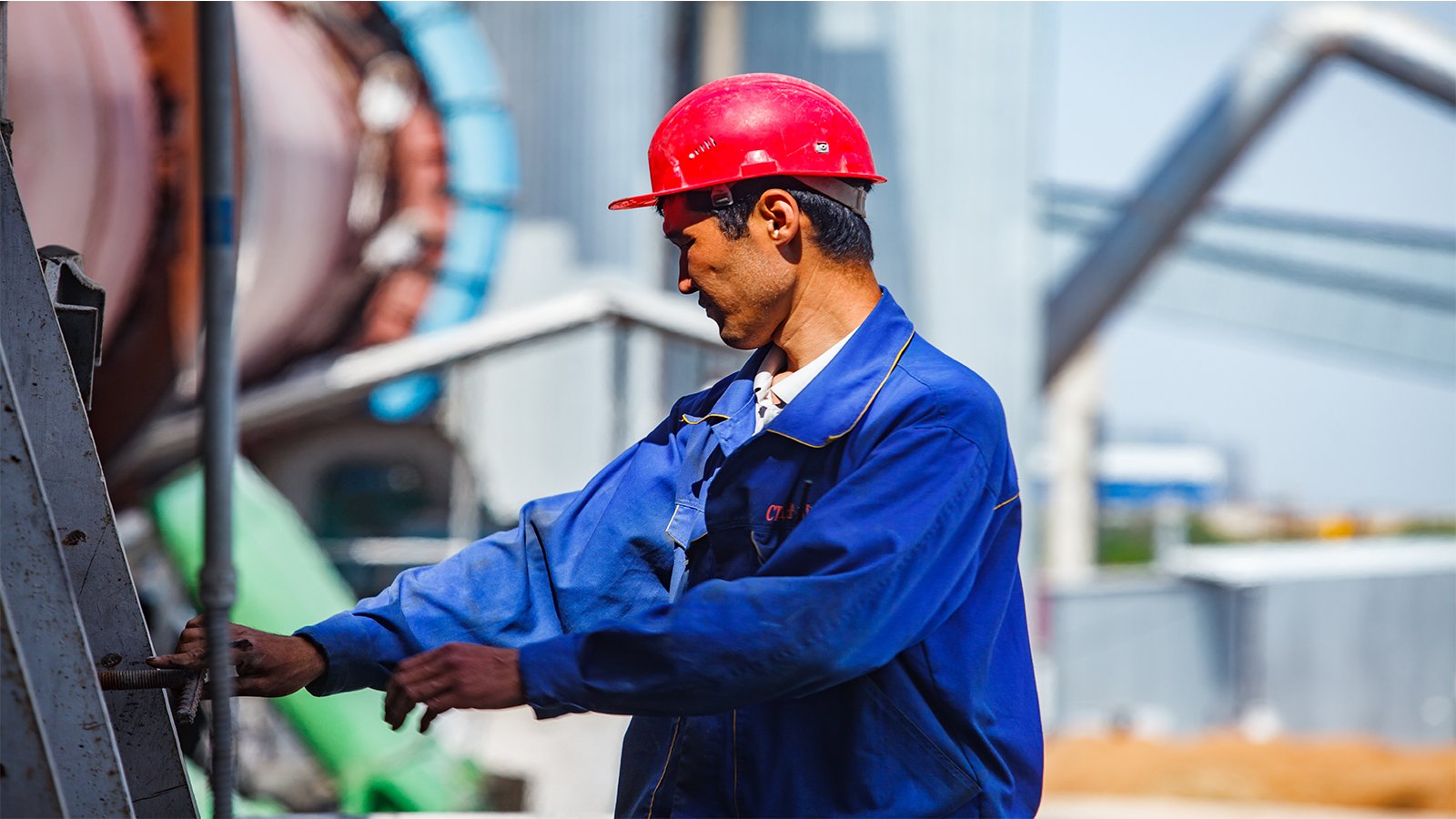Cement is one of the most widely used products in the world. But demand is especially unrelenting in China, which leads the world in cement production. Cement is a critical ingredient for infrastructure and housing developments that support the country’s increasingly urban population and growing megacities.
While consistent demand is good news for Chinese producers, cement is an energy-intensive industry that relies heavily on coal for fuel.
“Coal is a leading source of greenhouse gases,” said Alessandro Masiello, manager, Rockwell Automation. “Chinese cement producers are looking for ways not only to decrease fuel costs, but also to meet environmental regulations.”
Recently, the country’s leading cement producer turned to Rockwell Automation for a better way to optimize their process, decrease fuel consumption – and contain costs.
Complex Variables
Cement production is a complex process that begins in the raw mill, where limestone and other materials are pulverized and mixed. In the kiln, the raw materials are subjected to high temperatures and transformed to clinker. Clinker is transferred to the finishing mill, where it is ground and mixed with gypsum to produce the final product.
While cement production expends energy at every step, the kiln is one of the most difficult to optimize.
Modern cement plants typically use dry rotary kilns with calciners. The calciner preheats the raw material to about 900°C (1650°F). The calcination process is completed in the kiln, which heats the material to about 1200°C (2200°F). To achieve these temperatures, fuel is added to the kiln’s main burner – and at the calciner level.
“Because the quality of raw material and the heat value of coal is variable, process conditions in the kiln are constantly changing,” said Tiger Xiaohu He, cement industry consultant, Rockwell Automation.
In addition, fans cool the clinker as it leaves the kiln – and the system recirculates the resulting hot air back to the calciner. While the recirculated air improves energy efficiency, it adds another variable to the process.
What’s more, to maintain product quality, material is periodically tested to ensure the free lime content stays within a 1-2% range. The amount of free lime is directly related to the energy input to the kiln.
The Problem with Conventional Control
“The cement company used standard PID loops to control a limited number of variables,” Tiger Xiaohu He explained. “But given the high number of variables in a cement plant, PID loops cannot truly optimize the process.”
While the cement producer faced similar challenges throughout its extensive network of plants, they chose to focus first on their Yiyang facility.
The Yiyang plant produced 5000 tons of clinker per day, using about 500 tons of coal. Annually, the plant consumed approximately 165,000 tons of coal at a cost of US$16.5M each year. To reduce coal consumption, the company knew it had to achieve better control of kiln energy usage.
“Temperatures were fluctuating widely in the kiln,” said Tiger Xiaohu He. “To control temperatures, operators monitored the process and reacted to any fluctuations manually.”
For example, in the main burner, operators monitored thermal cameras – and then adjusted the fuel flow to increase or decrease the temperature. In the calciner, operators changed PID loop temperature setpoints to trigger fuel additions as needed.
“Operators were spending 50-70% of their time monitoring and adjusting the temperatures and fuel additions,” Tiger Xiaohu He said. “But despite their best efforts, they were unable to improve the thermal efficiency of the system.”
More Kiln Stability with MPC
To achieve more stable kiln operation, Rockwell Automation recommended a solution based on Pavilion8, a model predictive control (MPC) software platform.
“Pavilion8 MPC can be integrated with any pre-existing control system,” said Jingkun Tang, Pavilion business development manager, Rockwell Automation. “It improves the process by making predictions about plant outputs – and responding to process input variables and disturbances.”
Pavilion8 MPC leverages supervised machine learning technologies to build robust, dynamic models of multivariable processes. It analyzes historical data and production trends – as well as current process and laboratory data – and takes control to optimize performance.
For example, the software can model and predict the impact recirculating hot air will have on the calciner temperature. And then automatically manipulate coal additions to achieve a high quality product using the ideal amount of fuel.
“In an application like this, everything is linked,” said Alessandro Masiello. “Pavilion8 MPC allows you to better control quality, which allows you to reduce energy – and eventually push more capacity.”
Extending Gains to Mill Operations – and Across the Enterprise
Focusing on kiln performance was one way the Yiyang plant optimized coal consumption. But the plant also hoped to reduce energy consumption in another power-intensive process – their mill applications.
By applying Pavilion8 MPC in both the raw and finishing mills, the plant was able to better control for variables such as raw material inconsistency and clinker grindability – and optimize energy usage.
“Overall, the solution helped stabilize the kiln and mill operation,” said Jingkun Tang. “The more stable system significantly reduced the operator workload – and delivered impressive energy savings.”
With Pavilion8 MPC, the Yiyang plant reduced coal and energy consumption in the kiln by up to 2% – and captured additional savings in the mills. The decrease in coal represents annual savings up to US$330K and enabled the plant to reduce two byproducts of coal consumption – carbon dioxide (CO2) and nitrogen oxide (NOx) emissions.
“The pilot project at the Yiyang plant was highly successful,” said Jingkun Tang. “The company has already extended the Pavilion8 MPC solution to five additional plants – with at least five more on the way.”

